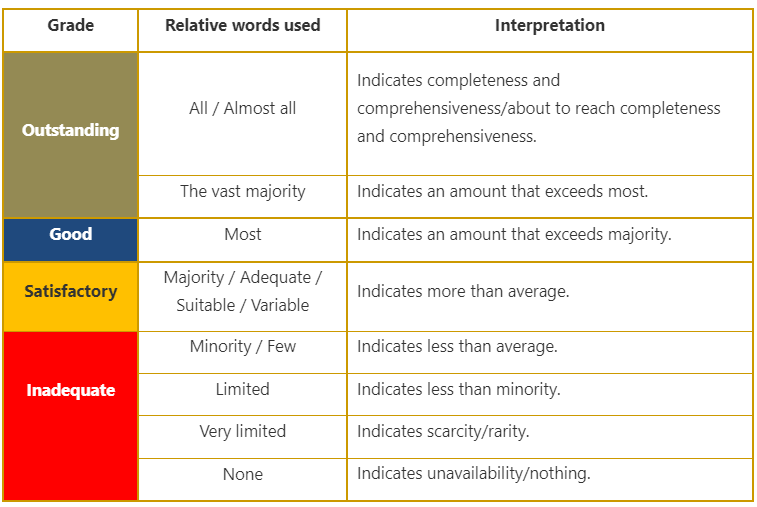Prior to the review, the school receives the self-evaluation form. The Directorate, and in collaboration with the Ministry of Education, provide training for the schools’ Principals on how to fill the self-evaluation form. The findings of both the self-evaluation form and the parents’ electronic questionnaires (PQs) assist the DGS in drawing up the Pre-Review Brief (PRB), which includes an analysis of the strengths and challenges in the school and help planning the review. This PRB document is a guide for the review.
The review normally takes place over a three-day period, as a team from the DGS visits the school.
During the review, activities include lesson observations; analysis of the school documents, scrutiny of students’ work and interviews with school’s staff, students and parents. Daily feedback is provided to the school Principal. At the end of the review, the Principal is given the final oral feedback and judgements.
Following the review, a report is produced, which highlights the main findings, the judgements and the recommendations. The judgements are awarded based on a four-point scale; 1 (Outstanding), 2 (Good), 3 (Satisfactory) and 4 (Inadequate). The Principal has an opportunity to comment on the factual information in the report before it is finalised. Once the report is final, the school must provide a post-review action plan. The action plan should set out clearly how the school intends to address the areas for improvement identified in the report.
Overall effectiveness judgements
Judgements of the overall effectiveness of the school are given based on a four-point scale, as follows:
Percentile words used in relation to different judgements:

